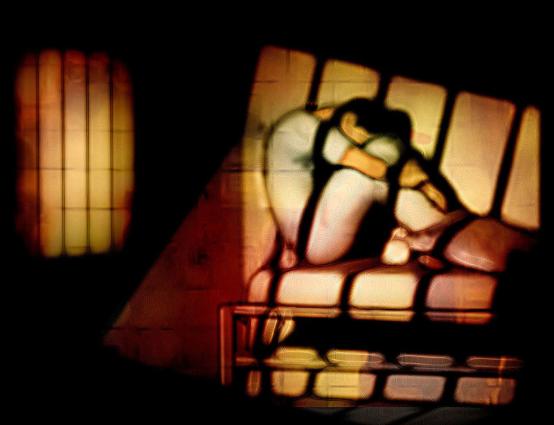Incarceration in a local jail, state prison, or federal prison is highly associated with a wide range of mental illnesses in the United States. Over half of all people incarcerated at the local or state levels have a significant mental health issue, and nearly half of all people incarcerated at the federal level have a mental health issue. According to the results of a study published in 2013 in the Journal of Health and Social Behavior, some of the mental illnesses found in jail and prison populations have their roots in early life and generally arise before incarceration. However, certain other mental illnesses in these populations stem from the incarceration experience itself. Basic Figures In 2006, the US Department of Justice’s Bureau of Justice Statistics issued an extensive report on mental illness in American jails and prisons. According to the findings contained in this report, 64 percent of all people incarcerated in a local jail have at least one mental health issue. Fifty-six percent of all people incarcerated in a state prison have similar issues, and 45 percent of all people incarcerated in a federal prison also have mental health issues. These figures were based on the results of interviews, during which jail and prison inmates gave details of their current psychiatric condition, as well as details of their condition over the previous year. The authors of the report then compared the results of these interviews to the official definitions for mental illness contained in the American Psychiatric Association’s Diagnostic and Statistical Manual of Mental Disorders. Specific mental illnesses tracked in the Bureau of Justice Statistics’ report include major depression, manic conditions like bipolar disorder, and psychotic disorders like schizophrenia. The authors of the report concluded that 24 to 28 percent of all state, federal, and local inmates have at least one or two symptoms of major depression, while 16 to 30 percent have five or more major depression symptoms. Seventeen to 23 percent of all inmates have at least one or two symptoms of a manic disorder, while 9 to 18 percent have four manic disorder symptoms. Eight to 17 percent of all inmates have one symptom of a psychotic disorder, while 2 to 7 percent have two psychotic disorder symptoms. Consistently, the highest rates for multiple symptoms of a mental illness appear in people incarcerated in local jails, while the lowest rates appear in people incarcerated in federal prisons. Before Incarceration or After Incarceration? In the study published in the Journal of Health and Social Behavior, a multi-university team examined the question of whether mental illness comes before or after incarceration in a jail or prison. To make this determination, the researchers took a detailed look at information gathered from the National Comorbidity Survey Replication, a nationwide project undertaken between 2001 and 2003. After reviewing their findings, the authors of the study concluded that some inmates have mental health problems before they enter a jail or prison, while others develop a mental health problem during incarceration and continue to experience the effects their illness after they’re released. Jail and prison inmates frequently have mental illnesses, such as a group of conditions called impulse control disorders, which start in adolescence or earlier stages of childhood. Because of their time of origin, these illnesses typically appear before an inmate’s first encounter with jail or prison. In addition, according to the results of a 2010 report issued by the Treatment Advocacy Center and the National Sheriff’s Association, U.S. adults with serious mental health problems are often sent to jail or prison rather than to a hospital where they could receive treatment for their illnesses. In fact, the population of seriously mentally ill people entering incarceration with preexisting conditions is fully three times larger than the population of seriously mentally ill receiving hospital treatment. The most common mental health problems acquired during incarceration are major depression and other illnesses classified as mood disorders (including other forms of depression and bipolar disorder), the authors of the study in the Journal of Health and Social Behavior report. These disorders commonly continue to damage the health of affected individuals after they leave jail or prison, and contribute significantly to ongoing problems such as difficulty finding or maintaining employment and disruption in a whole range of social and interpersonal relationships. In turn, these ongoing problems can contribute substantially to the onset of chronic mental health issues and increased risks for being incarcerated again at some point in the future.

